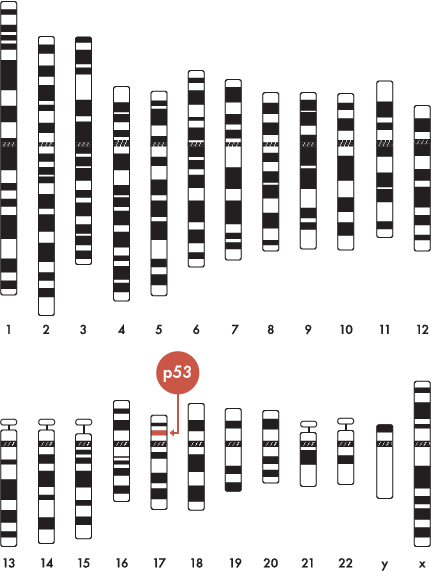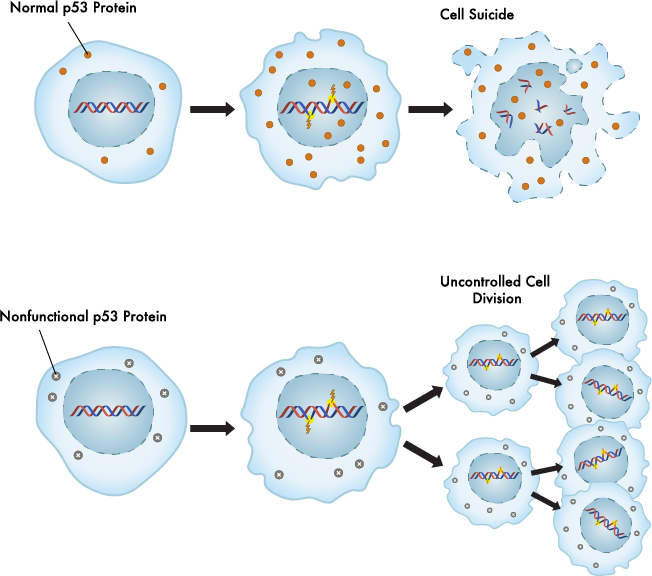The cell has many mechanisms to ensure that each DNA molecule replicates to form an identical copy. In addition, cells contain certain proteins (“spell-checkers” and “proof-readers”) that make sure that there are no “spell-ing” errors, or mutations in the nucleotide sequence before DNA replication.

Sometimes a mistake happens (meaning a muta-tion does occur) and the cells produce proteins that “instruct” the cell to actually commit suicide. This form of cell death is called apoptosis, and it is often the cell’s last resort for making sure that the DNA mutations do not get replicat-ed.
The p53 protein is an example of a protein that instructs cells to under-go apoptosis when spelling errors or mutations in the DNA occur (Figures 9 and 10). So p53 comes to the cells’ defense—it pro-motes apoptosis of cells with damaged DNA, thereby eliminating cells that might go on to develop into cancerous cells. In this sense, p53 is considered a “tumor suppressor” protein. Under normal conditions, tumor suppressors slow down cell division, repair DNA mistakes, or tell cells when to undergo apoptosis. These proteins act as the “brakes” in the cell cycle.
Despite the help from a protective protein like p53, problems can arise. For example, sometimes a mutation can occur in the region of DNA that is responsible for making the “spell-checker” or “proofreader” pro-teins. In fact, mutations can occur in the p53 gene(Figure 10). Remember that one of the jobs of the p53 protein is to instruct cells to die when mutations are present. So if the p53 gene now has a muta-tion, the p53 protein can’t do its job to get rid of cells with mutations. Instead, the cells with damaged DNA keep dividing and produce copies of the mutated DNA in the newborn cells. The cycle goes on to produce cancer. Just think of it as releasing the brakes in a speeding car. Once the gene is mutated, the brakes won’t work anymore to slow down cell growth!

Another type of gene that is often mutated to promote cancer is an oncogene. Oncogenes have the potential to cause cancer, but only when they get mutated. Once mutated, oncogenes they promote (or allow) uncontrolled cell growth, which leads to cancer. Think of them as the accelerator or the “gas pedal”.